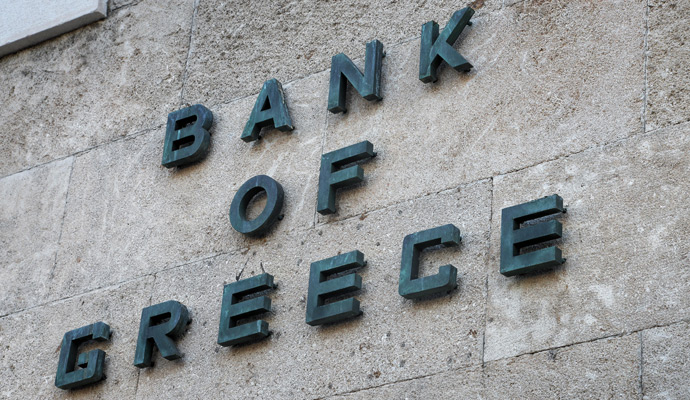Make a Crisis Last
How to convert extraordinary behaviors into ordinary parts of your culture.
(originally published by Booz & Company)This article was originally published by Booz & Company
When a machine jammed at an Alcoa plant in Arizona, a young, overzealous worker who was eager to keep his job stepped over the safety line to repair it. But disastrously, after he unjammed the machine, a large swinging arm was released that struck and killed him.
This catastrophic event quickly led to broad changes in Alcoa’s culture and changed people’s behaviors throughout the company. Within hours of the accident, CEO Paul O’Neill gathered senior executives to review video footage of what happened, make immediate safety changes, and personally reach out to every employee. He gave them his phone number, and he asked them to call him directly with any safety concerns or ideas for improvements. The calls came flooding in. According to Charles Duhigg, in his book The Power of Habit , O’Neill received suggestions about safety, as well as a host of other issues. There were business suggestions, ideas for innovations and new products, and efficiency advice that led to increased profits.
By reacting swiftly and thoughtfully to the awful incident, O’Neill not only implemented necessary and immediate safety changes, but also fostered more cultural and behavioral emphasis on inclusion. This made everyone feel invested and heard, and empowered them to have a voice in the company. And the invitation to participate in the management of the company took deep hold within the organization, in a manner that soon became habitual for its employees.
I share this story because it illustrates the important ripple effect that occurs when you create what Duhigg calls a “keystone habit”—a habit that has the power to start a chain reaction, changing other habits as it moves through an organization. Keystone habits, Duhigg notes, influence how people work, eat, play, live, spend, and communicate.
If you can start disrupting the habits around one thing, in this case, reporting ideas around safety, you stand to spread that habit throughout the entire company.
Some people who study culture believe that big one-off events have a disproportionate impact on how cultures take shape in organizations. I say that’s a misleading way to think about culture—largely because it assumes that the event, in and of itself, will change the culture. Yes, major events can indeed have significant impact on cultures. Disruption makes people question what they are doing, and it makes them more willing to change. Indeed, the more disruptive the event, the better. Leaders often say to me that they wish they could routinely get people behaving the way they did during a particular crisis. But unless a leader uses the disruptive event as a catalyst to spread a critical few new behaviors, it will rarely have a lasting impact on deeply imbedded cultural situations . From what I have witnessed, time and time again in the organizations I have worked with, people routinely miss this opportunity.
Disruption causes people to change behaviors on the spot, but the manager or leader who supervisors others, and who is in a good position to influence and motivate behaviors for the long term, must then take advantage and isolate the three or four behaviors they want to turn into habits. In addition to senior managers, those authentic informal leaders at lower levels can function informally as “special forces” in their organization to help reinforce the behaviors. (To read more about the special forces that might be hidden in your organization, see The Critical Few: Components of a Truly Effective Culture .)
What you’re looking for in any kind of cultural shaping, whether it’s one driven by a major event or not, is a few keystone behaviors that become broadly followed habits. This is powerful for several reasons:
1. Habits are hard to break. Duhigg argues that the only way to change a habit is to replace it with another habit. So, if you can harness the keystone behaviors that affect your strategic position and performance, and if you can transform those behaviors from one-off behaviors to habits, you can create an enormous—and lasting—cultural force. For example, if your strategic imperative requires developing more innovative ideas that your customers value, a keystone behavior might be for design engineers to have more direct interactions with thoughtful customers. You might start that by simply convening regular forums of informal leaders to share their direct customer experiences. Such forums can reinforce the importance and value of having regular customer interaction until engaging in the such behavior becomes habitual, and the forums are no longer needed.
2. Habits are triggered rapidly in the brain. Neuroscientists tell us that that habit triggering takes place in the brain’s basal ganglia and requires little sustained thought. In contrast, a thoughtful behavioral change takes place in the prefrontal cortex of the brain, which takes much longer to process.
3. Keystone habits influence other supporting behaviors. In other words, if a keystone habit changes, it will prompt other behavioral changes that are consistent with and supportive of the keystone habit. For example, when you eliminate all sugar from your diet, the diet actually triggers the elimination of other foods that are high in carbohydrates, and as a result accelerates weight loss results beyond what would occur by just eliminating sugar. Sometimes, a behavior like getting up an hour earlier in the morning will ensure consistent exercising behaviors. The most important benefits from fostering keystone habits often come from these complementary behavior changes.
Take advantage of the brain’s habit-forming capability to instill in your workforce those behaviors that you wish came naturally. Keystone habits are contagious, and they have the ability to transform an organization if you let them.





